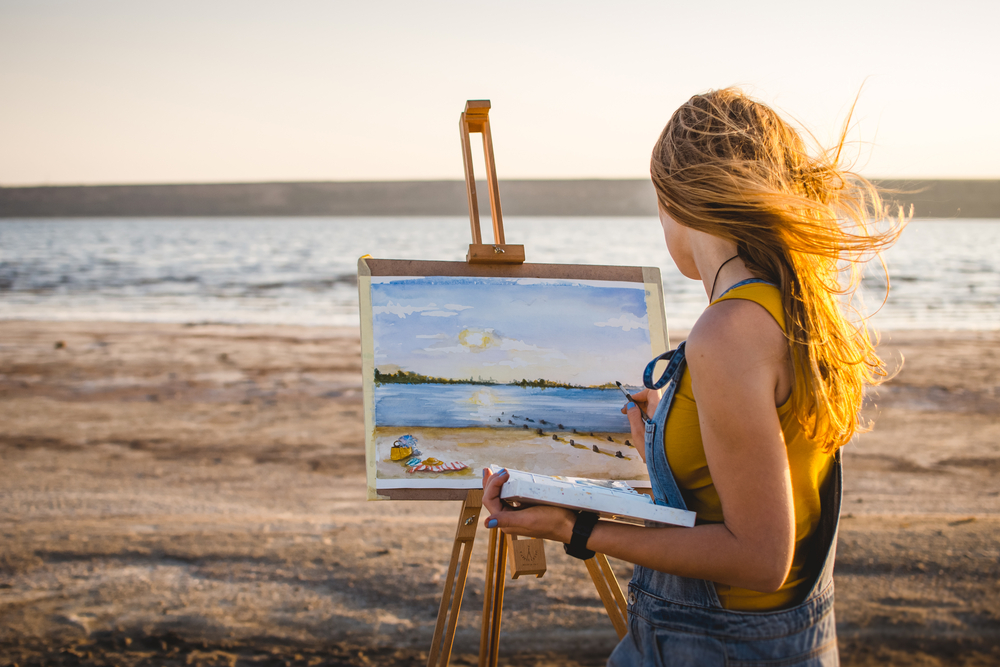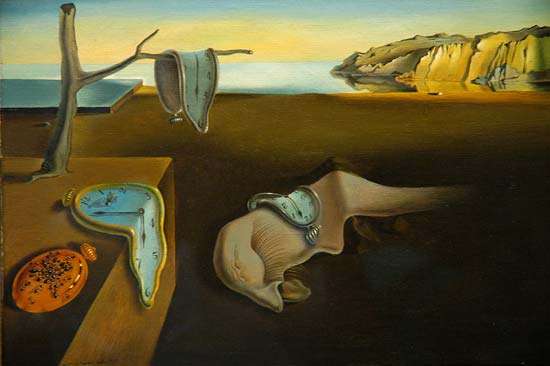A Practical Guide to Painting Landscapes

Learn how to paint landscapes with us! When people think about artistry, many of them envisage a relaxed artist sitting on a verandah looking out into a rolling, misty hillscape, easel in front of them and paintbrush in hand. Landscape painting is one of the true joys of being an artist, as no matter what level of expertise you have, it’s always a wonderful experience to look over a fantastic view and have a go at recreating it through your mind’s eye.
However, there are a few basics to know when it comes to painting landscapes. So whether you’re a seasoned pro looking to brush up your skills or you’re an absolute beginner, let’s run over some landscape painting guidance. But first, grab your paint brushes and paints and let's get into painting landscapes!
What is landscape painting?
Landscape painting is, quite simply, the depiction of natural scenery in art. Landscape paintings may capture mountains, valleys, bodies of water, fields, forests and coasts, and may or may not include man-made structures as well as people. Paintings from as early as the ancient and Classical periods could be classified as landscape paintings, however it didn’t emerge as an independent genre within Western tradition until the Renaissance in the 16th century.
The beauty of landscape painting is that it can also encompass a number of other artistic styles. For example, Salvador Dali’s ‘The Persistence of Memory’ (the one with the melting clocks) is a perfect example of a landscape painting blended with surrealism, a style that emerged from Paris in the 1920s.
Post-impressionists such as the famous Claude Monet and Camille Pissaro moved away from their traditionally romantic styles when it came to landscape painting, instead using techniques like pointillism, where dots of pure pigment were applied so that they juxtaposed one another and blended into harmonious tones from a distance. They favoured painting outside so that they could truly capture the effects of light and weather with their brushes.

The Persistence of Memory by Salvador Dali, courtesy of Britannica
Simple tips for landscape painting
You don’t have to include everything
When you’re painting a landscape, you really don’t need to feel obliged to cram every single thing you can possibly see within your work. Simply use common sense to include the strongest elements of the scene that characterise that particular landscape. Less is usually more.
Give the foreground preference
Try not to give the entire painting the same level of artistic detail. Always focus more on the foreground of the painting than the background, paying attention to the nuances of the front scene. This gives more authority to the foreground and helps draw the viewer’s eye to the most important elements of the painting.
Experiment with your greens
If you’re a beginner, it’s always going to be easier to just buy ready-mixed tubes of green paint in a variety of colours. This will ensure that you always have the biggest chance of getting the colour right the first time. However, if you’re wanting to experiment, try mixing your own greens with blue or yellow pigments to create unique tones that will really encapsulate the scene you’re painting.
Try it again and again
As frustrating as it can be, the best way to get better at something really is to try it over and over again. Once you’ve painted a scene, practice refining your skills by painting the same scene in different lights and tones, or at a different time of the year or different times of the day. This way, you won’t get bored with the scene; but you’ll instead learn about the different shades, shadows and colours that come with it.
More advanced landscape painting tips
Know the value distribution within your painting
When painting a landscape, it’s important for the composition of the work to create believable darks and lights. Clear value definition means the viewer will be able to know what is in the light and what is in the shade easily.
This is the best value distribution in landscapes, from lightest to darkest:
- The sky (this should be the lightest shape in the painting)
- Horizontal (the second lightest should be any flat or horizontal surface that is reflecting the sky)
- Slanted and diagonal (inclined surfaces like slopes and roofs should be a little darker)
- Upright (vertical elements like tree trunks should be the darkest, as their reflection of the sky is limited)
Influence your colours and values with some atmospheric perspective
When painting landscapes, some of the objects in the work are going to be very far away, meaning that the amount of atmosphere between the objects can be enormous. Air contains humidity, and floating particles create a filter that influences how we see the intensity and value of colours, it’s important to take this into account with your painting.
The basic rule is that the farther away things are, the grayer and lighter they get. For example, if you’re sitting on a train looking out into the distance, the hills far away will seem dim and gray, whereas the hills close to you will seem crisp, clear and green. Remember to take this into account when choosing the colours for your landscape painting.
Indulging your creativity with landscape painting
No matter what level of experience you have with painting landscapes, whether you’re an absolute beginner or a seasoned professional, Discount Art n Craft Warehouse stocks all the right paints and canvases. Chat to our team about your needs or browse our online range today.
If you're ready to get started with these techniques, don't forget your paints and accessories, brushes, paint sets and more, including acrylic paints, oil paints, watercolour paints, gouache paints, acrylic brushes, oil brushes, watercolour brushes and brush sets! Shop with Discount Art n Craft Warehouse today.
Visit our other painting articles, here:
